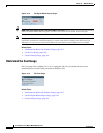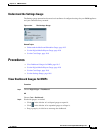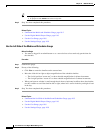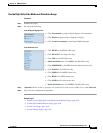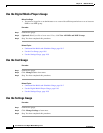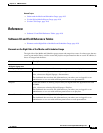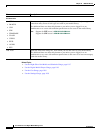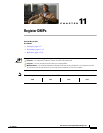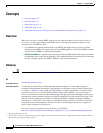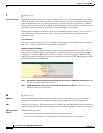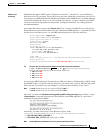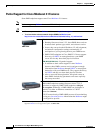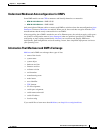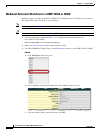
11-2
User Guide for Cisco Digital Media Manager 5.2.x
OL-15762-03
Chapter 11 Register DMPs
Concepts
Concepts
• Overview, page 11-2
• Glossary, page 11-2
• Restrictions, page 11-9
• Guidelines, page 11-10
• Understand the Sequence of Operations for Non-Medianet Autoregistration, page 11-11
Overview
Before you can start to manage DMPs centrally for use with the features of Cisco Digital Signs or
Cisco Cast, you must register them with DMM. You can automate this registration process or run
it manually for one DMP at a time.
• Cisco DMS-native autoregistration finds every DMP in the subnets that you specify and then
configures these DMPs to recognize and trust your DMM appliance. It restarts the DMPs and then
registers them in DMM for centralized management.
• NEW IN CISCO DMS 5.2.3—Medianet autoregistration finds any DMP automatically when you attach it
to a Medianet-ready switch in your Enterprise. This method optimizes the switch port for rich media
delivery, and then registers the DMP in DMM for centralized management.
Glossary
Timesaver Go to terms that start with... [
A
|
C
|
D
|
L
|
M
].
A
autoregistration
See MSI registration service.
Auto Smartports
1
1. Infrequently abbreviated as ASP.
A collection of interface-level switch commands bundled together as a macro that configures a
switchport without human intervention. Upon detecting a connection to one of its physical interfaces
(or “ports”), a Medianet-ready switch uses CDP packets or a similar mechanism
2
—in tandem with a
port-based network access control (PNAC) standard such as 802.1x/MAB—to learn what type of
device has connected to it. Device identification triggers the appropriate Auto Smartports macro to run
automatically on the switch and configure its interface appropriately for the detected device type. This
behavior eases the administrative burden of configuring multiple switchports manually. (Similarly,
when there is a “link-down” event on the port, the switch removes the macro.) In the ITU model and
framework for network management, known as FCAPS, Auto Smartports macros act in support of
what’s called configuration management.
See Auto Smartports Configuration Guide, Release 12.2(58)SE at
http://cisco.com/en/US/docs/switches/lan/auto_smartports/12.2_58_se/configuration/guide/aspcg.html.
2. Such as Link-Level Discovery Protocol (LLDP) packets, packets that include specific MAC addresses or Organizational Unique Identifiers (OUIs), or
attribute-value pairs within a RADIUS response.



